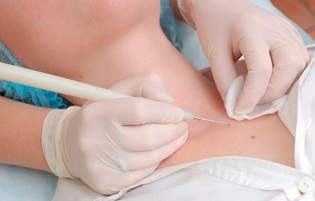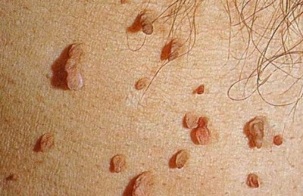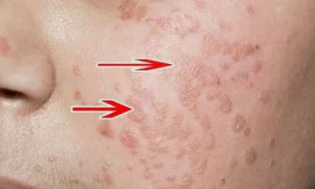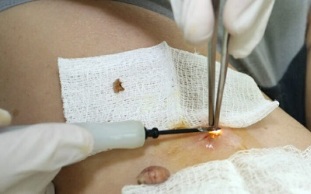
Human papillomavirus (HPV, HPV- human papillomavirus) or papillomavirus is a group of infections that includes more than 100 types of viruses, 80 of which are pathogenic to humans. According to World Health Organization statistics, 70% of the world's population is HPV carriers. In most cases, the infection occurs after the onset of sexual activity and may not be symptomatic for a long time.
Causes of HPV infection
Symptoms of papillomavirus infection in women can be: various types of warts, flat and genital warts, cervical dysplasia. However, the most dangerous pathological manifestation is the development of cervical cancer. There are also data linking the development of anal cancer, external genitals, vagina with infection with some types of human papillomavirus (HPV 16, 18, 45, 56 types).
Shipping method:
- Sexual intercourse.It is the main means of transmission of human papillomavirus infection. Using a condom during sexual intercourse reduces the risk of papillomavirus virus infection in humans, however it does not provide a definite guarantee that infection will not occur, as the virus particles are very small in size.
- House-to-house communication lines.The cause of infection is the use of intimate hygiene products of the joints: towels, soap, use of public toilets, baths.
- Natural birth.HPV can be transmitted to infected children as the child passes through the birth canal of an infected woman.
The cause of this infection is the patient's skin cells and mucous membranes. In this case, one may not know that he or she has become a carrier of the virus, as warts and papillomas can be microscopic in size and remain invisible during visual examination.
Predisposition of factors contributing to the development of viral infections:
- onset of sexual activity at an early age;
- free sex without using a condom;
- frequent abortions;
- presence of infectious diseases of the genital organs;
- long-term use of oral contraceptives;
- decreased body immune response;
- does not comply with personal hygiene rules;
- if a sexual partner has HPV;
- exposure to frequent stressful situations;
- bad habits.
Through pores, cracks, microtraumas of the skin and mucous membranes, the virus penetrates into the basal layer of the epithelium, which ensures the normal growth and renewal of the skin and mucous membranes. The DNA (deoxyribonucleic acid) of basal layer cells carries information about healthy cell structure. Viral particles, which are incorporated into DNA, alter this information, resulting in the formation of affected cells, which, in the process of growth and fission, cause symptoms of the disease.
Symptoms of human papillomavirus virus infection in women

One of the possible manifestations of human papillomavirus infection is the appearance of genital warts and papillomas. They are specific formations that have the appearance of cauliflower, a bunch of grapes or a brush of rooster, pink or fleshy. Depending on the type and type of virus, they can infect a person’s skin and mucous membranes.
Genital warts can form around or near the anus, especially if there is anal intercourse.
Papillomas can occur on the skin around the fingers, toes, hands, around the eyes, armpits and scalp. Sometimes they also form in the soles of the feet and cause pain while walking.
This type of disease rarely progresses to malignant tumors and cancer, however, to prevent the development of the disease, the formation is surgically removed.
Due to HPV infection
Human papillomavirus in women can cause the growth of genital warts, papillomas, flat warts, which can cause discomfort, pain, and when they are injured, bleeding can occur.
Eighteenth and sixteenth types of HPV are the most dangerous, as they lead to the development of cancer. Cervical cancer, which can be associated with infection with the human papillomavirus virus, ranks second among various malignant diseases in women. The death toll from it reached fifty percent.Flat warts

The disease is characterized by the formation of flat plaques that practically do not rise above the skin level.
Often, the mucous membranes of the vagina and cervix are affected.
Cosmetic defects in them are much smaller than in genital warts.
This type of pathology has a higher risk of degeneration into cancer.
Cervical mucous membrane dysplasia
Pathology is a change in the normal structure of cells in the cervical mucous membrane, called atypia. These conditions in gynecology are considered precancerous and require intensive observation and treatment.
The disease in most cases is asymptomatic and is detected during routine checkups by a gynecologist. Dysplasia of several degrees of severity is distinguished: mild, moderate, severe. The choice of treatment method depends on its severity.
Cervical cancer
This is the most dangerous manifestation of the disease. Cervical cancer ranks second among tumor pathologies in women and is associated with infection with HPV types 16, 18.
The disease can persist without clinical signs or manifest itself with nonspecific symptoms: weakness, increased fatigue, weight loss, the appearance of seeing bleeding from the vagina outside the menstrual cycle.
Methods of treatment of diseases
If there are any signs of HPV infection, given the dangers involved, do not self-medicate.
To choose the optimal treatment tactics, it is necessary to consult a gynecologist, who, after a thorough examination and conducting the necessary tests, will provide adequate therapy.
To date, there is no cure that can cure HPV forever. The main goal of treatment is to reduce the concentration of the virus in the body to prevent further progression of the disease.
Key areas of therapy:
- treatment of manifestations (warts, papillomas, dysplasia);
- antivirus therapy;
- use of funds aimed at boosting immunity.
If there is a papilloma, genital warts, warts, areas of dysplasia, even with a small size, it is recommended to remove it, because the presence of neoplasms increases the concentration of viral particles in the female body, which contributes to further pathological development.
Surgical treatment
Methods of getting rid of genital warts, papillomas, warts and dysplasia are as follows:
- surgery;
- cryotherapy;
- diathermocoagulation;
- laser freezing;
- radio wave therapy;
- chemical attack.

The surgical method consists of removing the growth with a scalpel, is the cheapest method of treatment, but after that, significant cosmetic defects remain and the healing period is significantly extended. There is also a risk of secondary infection. Therefore, this type of intervention is used in extreme cases.
During cryotherapy, liquid nitrogen is applied to the affected area, which freezes pathological formation. After a few days, the papilloma or condyloma disappears and small wounds form under it, which heal in 10-14 days.
Diathermocoagulation is the application of high temperatures to the affected skin area. This procedure is quite painful and therefore requires anesthesia. The disadvantage of this method is the formation of rough scars at the site of pathological formation.
During laser coagulation, the effects of laser beam on the affected area cause drying of the neoplasm. Dry crusts form in their place, which after a long time disappear without leaving scars. This type of treatment is the most gentle, but its high cost is considered a disadvantage.
Radio wave therapy consists of exposing the area affected by radio frequency waves. When using this type of treatment, there is no risk of bleeding, clear scars do not form, but the disadvantage is the high cost.
Chemical methods are used when there are small formations. Special medications are applied to the affected area. After several applications, crusts form on the treated area, which disappears after a few days.
Drug Use
Drug therapy for human papillomavirus virus infection includes the use of the following groups of drugs:
- antiviral drugs;
- immunostimulant.
To reduce the concentration of the virus in a woman's body and prevent its further reproduction, long-term antiviral therapy is prescribed. The drug is used in tablet form and suppositories, the dose and duration of treatment should be determined only by the attending physician.
Immunostimulants are prescribed after the analysis and detection of reduced levels of immunity to increase the body's defenses, accelerate the appearance of immune cells, and stimulate the production of antibodies aimed at fighting the virus.
Treatment of HPV infection in pregnant women
The presence of human papillomavirus infection in a woman's body does not affect the reproductive system and is not a contraindication to pregnancy. If HPV deterioration occurs during pregnancy, therapy for this condition is not carried out during this period, treatment is prescribed after childbirth.
However, a woman must be monitored by a doctor throughout her pregnancy. With the development of severe discomfort, a gentle method of therapy is prescribed. In extreme cases, when there are contraindications to vaginal birth due to the development of HPV, caesarean section is performed.
Get rid of HPV with traditional medicine
At home, you can use traditional medicines such as decoctions and herbal infusions - for the treatment of papillomatosis, ointments - to get rid of warts, papillomas and warts produced.
How to prepare decoctions and infusions for the treatment of human papillomavirus infection:
- Horse tails, nettle ingredients, rose hips, dandelion roots, banana leaves are mixed in equal amounts. At 3 st. l. Add 800 ml of water to the resulting mixture, boil for 10 minutes over low heat, then allow to infuse for 3 hours. Apply 1 glass 3 times a day 30 minutes before eating.
- Oregano Ingredients, yarrow, immortelle, St. John's wort, birch buds, nettle, calendula, coltsfoot, burnet root, chamomile flowers, ropes, banana leaves, celandine, linden flowers, cumin seeds, wisely mixed in equal amounts. Pour 2 tbsp into a thermos. l. the resulting mixture, pour 500 ml of boiling water, leave to infuse overnight. Take 0. 5 cups 4 times a day.
- Valerian root, lemon balm, oregano, linden flowers, hop cones, motherwort are mixed in equal amounts. Pour 1 tbsp into a thermos. l. the resulting mixture, pour 0. 5 liters of boiling water and let it soak for 3-5 hours. Apply 250 ml 2 times a day.
For the treatment of local manifestations occur:
- Celandine Juice. Juice is made from fresh leaves or bought from a pharmacy. Before using the product, the skin of the affected area must be steamed, and healthy areas near the affected area should be treated with a fat cream. Celandine must be carefully applied to the affected skin. The procedure should be repeated every two days for a week until the pathological formation disappears.
- Garlic. Vegetables should be grated on a fine grater and mixed with skin cream until a viscous consistency is formed. Apply the resulting mixture to the formation area for 2-3 hours daily for a month. After the procedure, wash the skin with soapy water.
- Young walnuts. They must be crushed using a meat grinder, pour the resulting mixture into a glass jar of 0. 5 liters until filling 2/3, pour the rest of the container with kerosene. Allow to soak for 20 days, then strain using a rag. Infusion to treat affected skin 2 times a day.
After therapy and getting rid of the external manifestations of HPV, a woman should visit a gynecologist every six months to monitor and prevent further development of the disease.















































































